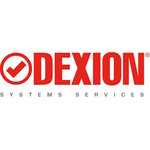Warehouse Management Software is intended to be available from numerous devices and platforms. It is accessible through cloud-based technologies from computers, laptops, tablets, and even cellphones. Additionally, most warehouse management systems are compatible with a wide range of operating systems, including Windows, MacOS, and Android. This enables quick and efficient access to the software regardless of the device or platform being utilized.
List of 20 Best Warehouse Management Software
Warehouse Management Suite is a software solution for businesses of all sizes. Designed to optimize and simplify warehouse management, this robust suite streamlines operations, improves inventory accuracy, and enhances productivity. Experience seamle...Read More Warehouse Management Suite
RDS Lite WMS - an all-inclusive warehouse management system designed to streamline inventory management, order processing, and warehouse operations. Equipped with real-time data access, seamless integration capabilities, and efficient resource alloca...Read More RDS Lite WMS
FOXWARE is an advanced Warehouse Management Software designed to streamline and enhance your warehouse operations. It offers features such as RF Scanning, real-time data access, and customizable EDI capabilities, ensuring accurate and efficient manag...Read More FOXWARE
Latitude WMS solution for efficient warehouse management and inventory control. This cutting-edge software is designed for wholesale, retail, and electrical distributors, optimizing inventory management and simplifying shipping processes. With Latitu...Read More Latitude WMS
TradePeg: solution for streamlining wholesale and ecommerce procedures. Our comprehensive platform offers advanced tools and seamless integrations to boost productivity and profitability. With TradePegs integrated product suite, take charge and autom...Read More TradePeg
Saara Inventory Counting is ainventory management solution perfect for retailers and warehouse managers. This powerful software provides a user-friendly self-service platform that streamlines stock counting. Say goodbye to manual label scanning, as S...Read More Saara Inventory Counting
Vanderlande is a intelligent software that is reshaping the logistics industry. Our cutting-edge technology is perfectly customized to meet your operational needs, offering seamless integration and enhanced efficiency for your warehouse, airport, or...Read More Vanderlande
NorthStar WMS is a versatile and custom warehouse management system designed to streamline outbound processes and enhance client satisfaction. This comprehensive solution features advanced wireless picking logic and complete shipping capabilities, ma...Read More NorthStar WMS
Stock Register is a inventory management and billing solution tailored for small businesses. With comprehensive features such as stock tracking, daily sales and purchase monitoring, and party balance management, this software is guaranteed to enhance...Read More Stock Register
Wireless Warehouse In A Box is a warehouse management solution for 3PL, distribution, and manufacturing businesses. Seamlessly integrated with e-commerce and ERP systems, it boasts advanced features that eliminate inefficiencies and boost productivit...Read More Wireless Warehouse In A Box
WarehouseNet is a inventory management software designed to optimize storage capabilities and increase operational efficiency. Perfect for small businesses, it offers real-time monitoring, seamless integration, and detailed reporting features to stre...Read More WarehouseNet
Snapfulfil WMS is solution for streamlined warehouse management, designed to increase efficiency and stay ahead in the competitive market. Its advanced features and seamless integration capabilities provide complete control and unmatched visibility...Read More Snapfulfil WMS
Iptor Warehouse Management, an advanced software designed to transform inventory management, simplify processes, and enhance accuracy. With its intuitive interface and real-time monitoring capabilities, this tool empowers businesses to optimize effic...Read More Iptor Warehouse Management
Upgrade your warehousing operations with MultiPick solution for efficient warehouse management. Seamlessly integrating with your business, MultiPick offers real-time visibility and simplifies processes for increased efficiency and accuracy. No matter...Read More MultiPick
Enterprise WMS is a Warehouse Management System designed specifically for third-party logistics (3PL) companies. This advanced solution offers a variety of customizable features to effectively manage inventory, streamline orders, and optimize deliver...Read More Enterprise WMS
LoMag sets a new standard for inventory management software, elevating businesses with its advanced capabilities. Its groundbreaking tools streamline operations and improve accuracy, resulting in unparalleled efficiency. With its user-friendly stock...Read More LoMag
Peoplevox WMS, a warehouse management system that streamlines operational processes and enhances productivity. Purpose-built to optimize warehouse operations, it eliminates concerns like overselling and enables steady growth for businesses. Featuring...Read More Peoplevox WMS
Discover the powerful capabilities of Sphere WMS, a top-of-the-line warehouse management solution available on the cloud. Trusted by leading logistics companies, this feature-rich system offers comprehensive inventory tracking and efficient operation...Read More Sphere WMS
Key Optima solution for service and workforce management that will transform your business operations. With a remarkable 30-year track record and a 99.9% uptime, this powerful software expertly manages over 1PB of client data, increasing efficiency a...Read More Key Optima
Client360 Cloud ERP is cloud-based solution tailored for SMEs and MSMEs. This platform optimizes all facets of your business, from sales and marketing to customer service, finances, inventory, manufacturing, equipment maintenance, procurement, and wo...Read More Client360 Cloud ERP
Learn More About Warehouse Management Software
- What Is Warehouse Management Software?
- What Are The Recent Trends In Warehouse Management Software?
- Benefits Of Using Warehouse Management Software
- Important Factors To Consider While Purchasing Warehouse Management Software?
- What Are The Key Features To Look For In Warehouse Management Software?
- Why Do Businesses Need Warehouse Management Software?
- How Much Time Is Required To Implement Warehouse Management Software?
- What Is The Level Of Customization Available In Warehouse Management Software?
- Which Industries Can Benefit The Most From Warehouse Management Software?
- Conclusion
What Is Warehouse Management Software?
Warehouse Management Software (WMS) is an effective tool for optimizing and streamlining warehouse operations. It is a comprehensive software solution that allows firms to manage all aspects of their warehouse operations, such as inventory tracking and order fulfillment. WMS is a centralized platform for tracking and managing inventory levels, storage locations, and product movements across the warehouse, providing accurate and real-time visibility into all warehouse activities.
The initiative employs advanced technologies such as barcode scanning, RFID, and automation to improve process efficiency and accuracy. This enables firms to keep track of stock levels, monitor stock movements, and identify items in the warehouse quickly and accurately. WMS enables businesses to reduce the time and effort required for manual inventory management, freeing up resources for more vital tasks.
Effective inventory management is critical for firms to efficiently fulfill orders while maintaining customer satisfaction. WMS offers a number of inventory management capabilities, such as stock level monitoring, batch and expiry tracking, automated replenishment, and picking and packing optimization, to ensure that businesses always have enough stock on hand to complete requests on time.
Order fulfillment is another key aspect of warehouse operations that can be enhanced with the use of WMS.The platform supports real-time order tracking, allowing firms to monitor the status of each order and identify bottlenecks in the fulfillment process. This helps businesses improve order accuracy, reduce order processing times, and boost customer satisfaction.
Furthermore, WMS has robust reporting and analytics capabilities, allowing businesses to generate detailed data on warehouse performance, inventory levels, and order fulfillment indicators. These insights can help businesses identify areas for development and make data-driven decisions to optimize their warehouse operations.
What Are The Recent Trends In Warehouse Management Software?
Warehouse management software (WMS) has become an indispensable tool for firms that handle huge inventories and warehouse operations. With the ever-changing technology landscape, various current advancements are defining the capabilities and functionalities of WMS.
Buyers of warehouse management software should be aware of the following main trends:
1. Cloud-Based Solutions: One of the most important trends in WMS is the shift to cloud-based solutions. Cloud-based WMS has various advantages over on-premise software, including cost effectiveness, scalability, and accessibility. Cloud-based WMS allows enterprises to access real-time data from any location and at any time, making it easier to manage remote or numerous warehouses.
2. Automation: Automation has been a buzzword in the logistics and warehousing industries, and it is becoming more essential in WMS as well. Warehouse management software can now automate a variety of regular processes, including data entry, inventory tracking, and order processing, thanks to the integration of advanced technologies such as Artificial Intelligence (AI), Machine Learning (ML), and the Internet of Things. This not only saves time but also decreases human mistake, resulting in greater efficiency and accuracy in warehouse operations.
3. Mobile Technology: The use of mobile technology in warehouse management has been increasingly popular in recent years. With the growing popularity of smartphones and tablets, WMS providers are introducing mobile applications that enable warehouse managers and employees to access real-time data, scan barcodes, and track inventory while on the road. This provides greater flexibility and agility in warehouse operations while also increasing warehouse labor productivity.
4. Data Analytics And Reporting: As WMS generates large volumes of data, firms are increasingly relying on data analytics to acquire important insights into their warehouse operations. Warehouse managers can use data analysis to make data-driven decisions and discover areas for improvement in inventory levels, picking and packing times, and order processing. Furthermore, WMS offers customisable reporting options, allowing organizations to measure key performance indicators and assess the overall effectiveness of warehouse operations.
5. Integration With E-commerce And Omnichannel Capabilities: As e-commerce and omnichannel sales grow, WMS is developing to meet these demands. Integrating WMS with e-commerce platforms and other sales channels enables unified order fulfillment and inventory management across numerous channels. This not only enhances the client experience, but it also streamlines warehouse operations by eliminating the need for human data entry and lowering the likelihood of errors.
Benefits Of Using Warehouse Management Software
Warehouse management software is a vital tool for any firm that handles inventory and storage. It is intended to streamline and automate warehouse operations, including inventory tracking and storage, as well as order fulfillment and shipment processing. Investing in reliable warehouse management software can provide numerous benefits to your company. First and foremost, employing warehouse management software may greatly increase the accuracy of your inventory tracking.
Real-time data and automated processes enable you to eliminate human errors and track stock levels, lowering the risk of stockouts and overstocking. This, in turn, can save you money by eliminating needless inventory and ensuring that you have enough stock to fulfill orders. Warehouse management software also provides detailed insights and reporting capabilities.
By tracking parameters like inventory turnover, order volume, and storage use, you can obtain a better knowledge of your operations and make more educated decisions to improve processes. These insights can help enhance efficiency, lower expenses, and boost profits. Another key advantage of employing warehouse management software is enhanced productivity.
This software, which includes capabilities like as barcode scanning, automated picking, and optimal warehouse layouts, can dramatically accelerate the pick, pack, and ship process. This can save you time and money, allowing you to execute orders more efficiently and satisfy consumer requests faster. Warehouse management software may improve both internal operations and the overall client experience.
With accurate inventory control and speedier order fulfillment, you can ensure that your clients' orders arrive on time and with few errors. This can result in improved customer happiness, as well as increased client retention and loyalty. Furthermore, by automating warehouse procedures, warehouse management software can cut down on manual labor, resulting in cost savings and increased staff productivity. It can also help to maximize space use, allowing you to store more products in less area while avoiding the costs of expanding your warehouse.
Important Factors To Consider While Purchasing Warehouse Management Software?
When it comes to warehouse management software, there are several important elements to consider before making a purchase. These elements can have a significant impact on the efficacy and efficiency of your warehouse operations, so it's critical to thoroughly consider them before making any decisions.
The following are some of the most significant variables to consider while selecting warehouse management software:
1. Scalability: As your company grows, your warehouse management requirements will evolve. That is why it is critical to select software that can grow with your organization. Look for a solution that provides flexible pricing options and the opportunity to add or remove features as your requirements change.
2. Customization: Because each warehouse has its own set of processes and workflows, you should select software that can be tailored to your specific requirements. This ensures that the software is compatible with your present operations and can accommodate any future adjustments.
3. Integration: Most warehouses employ a range of tools and systems, including inventory management software, barcode scanners, and delivery platforms. To avoid process disruptions, ensure that your warehouse management software integrates easily with these platforms.
4. User-Friendly Interface: Because your warehouse personnel will be the major users of the software, you must select a solution with an easy-to-use interface. This saves time and shortens the learning curve for your personnel, making it easier for them to adjust to the new system.
5. Mobile Compatibility: With the advent of remote work and on-the-go operations, it's critical to select warehouse management software that can be used from any location and on any device. This allows your staff to stay connected and on top of assignments even when they are not physically present in the warehouse.
6. Support And Training: Any new program must be implemented and trained before it can be used successfully. Make sure the software provider provides extensive support and training to ensure that your team has the knowledge and skills needed to operate the product properly.
7. Reporting And Analytics: Tracking and analyzing important indicators is critical for increasing warehouse efficiency and making data-driven decisions. Look for software that allows you to create customized reports and analytics to obtain insight into your warehouse operations.
What Are The Key Features To Look For In Warehouse Management Software?
When it comes to selecting the best Warehouse Management Software (WMS) for your organization, there are numerous crucial characteristics to look for. These characteristics can significantly impact the efficacy and efficiency of your warehousing operations.
Here are the most important things to consider while assessing WMS options:
1. Inventory Management: Proper inventory management is essential for a successful warehouse. Look for a WMS that provides real-time inventory tracking and visibility, allowing you to manage stock levels precisely and efficiently while reducing errors and preventing stockouts.
2. Order Fulfillment: A WMS with robust order fulfillment features streamlines the entire order processing process, from picking to delivery. It should include automated picking, wave picking, and cross-docking to increase order accuracy and expedite the fulfillment process.
3. Integration With Other Systems: Your WMS should be able to work seamlessly with your current systems, such as ERP, CRM, or accounting software. This ensures data consistency and eliminates the need for human data entry, saving time and lowering error rates.
4. Automation: Look for a WMS that has automation features like barcode scanning and RFID to help speed up procedures and reduce human error. This can also help to increase inventory accuracy and lower labor costs.
5. Reporting And Analytics: An effective WMS should have robust reporting and analytics tools for tracking critical parameters such as inventory levels, order status, and cycle durations. These insights can help you improve warehouse operations and make data-driven decisions.
6. Scalability: It is critical to select a WMS that can expand alongside your organization. Look for a system that can meet both your current and future warehousing needs as your firm grows.
7. User-Friendly Interface: An easy-to-use and intuitive interface is critical for the new system's quick adoption. Before purchasing, make sure to test the software and seek for features such as configurable dashboards, simple data entry, and extensive search options.
8. Mobile Access: With the growing use of mobile devices in warehouses, it's critical to select a WMS that has a mobile app or responsive design, allowing users to use the software from their mobile devices at any time and from any location.
9. Security: Because warehouses deal with sensitive data like as inventory, customers, and financial information, it is critical to select a WMS that prioritizes security. Look for features like data encryption, access limits, and automatic security updates.
10. Customer Support: Finally, assess the type and amount of customer support offered by the WMS vendor. Look for a vendor who has a strong reputation for customer service, provides timely software upgrades, and offers a number of help channels such as phone, email, and chat.
Why Do Businesses Need Warehouse Management Software?
In today's fast-paced business world, efficient and effective warehouse management is critical to the success of any firm. From small enterprises to major corporations, the ability to manage inventory, orders, and shipments efficiently is critical for remaining competitive and satisfying client demand. This is when warehouse management software comes in handy.
Warehouse management software is a strong tool for automating and simplifying warehouse operations. It provides a variety of functions, including inventory monitoring, order and shipping management, labor tracking, and reporting, all available from a centralized platform. This software allows organizations to improve their warehouse operations in a variety of ways.
One significant advantage of employing warehouse management software is improved accuracy and efficiency. The software uses barcode scanning and real-time tracking to guarantee that inventory is received, stored, and picked for orders correctly. This avoids errors caused by human data entry while considerably speeding up the fulfillment process. Furthermore, warehouse management software gives organizations real-time insight into their inventory levels.
This allows them to maintain ideal stock levels and avoid stockouts, resulting in fewer missed sales and consumer discontent. The software may also track expiration dates and lot numbers to ensure that products are dispatched and sold in the proper order. Warehouse management software also improves communication and collaboration across departments.
This is especially useful for organizations with several warehouses or e-commerce operations, as the software enables smooth coordination of inventory, order processing, and delivery. It also removes paper-based operations, which reduces the likelihood of miscommunication and delays. Another important feature of warehouse management software is its capacity to produce extensive reports and analytics.
This gives firms significant insights into their warehouse operations, allowing them to find improvement opportunities and make data-driven decisions. These reports provide a thorough overview of the warehouse's operations, including labor productivity and inventory turnover rates.
How Much Time Is Required To Implement Warehouse Management Software?
The time required to establish warehouse management software varies based on a number of factors, including the size and complexity of your warehouse operations, the precise features and customization choices you select, and the effectiveness of your implementation process. On average, a small to medium-sized warehouse will take between 2 and 6 months fully implementing a warehouse management system.
For larger and more complicated warehouses, the schedule can be extended to 12 months. It is vital to remember that the implementation process consists of multiple steps, such as data analysis, system configuration, staff training, and system testing. Each stage necessitates meticulous preparation and collaboration between your team and the software vendor, which may impact the total timetable.
Furthermore, it is critical to set aside enough time for testing and troubleshooting to verify that the program works properly before going live. Rushing through the deployment process might lead to errors and delays that disrupt your warehouse operations. To reduce implementation time, it is recommended to gather all relevant data and processes and to select a software provider who provides support and training to ensure a smooth transition.
What Is The Level Of Customization Available In Warehouse Management Software?
Warehouse management software (WMS) is an important tool for firms trying to improve warehouse operations and efficiency. One essential element to consider when selecting a WMS is the level of customisation provided. After all, each warehouse has own requirements and operations, so having software that can be adjusted to your individual requirements is critical.
Most WMS offer some level of customization, allowing users to tailor their system to their individual requirements. This might include simple modifications like adding or eliminating fields from data entry forms, as well as more significant changes like developing new workflows and automating processes. When evaluating the extent of flexibility offered in a WMS, there are a few critical factors to consider.
First, the user interface should be customisable, allowing you to arrange and show information in a way that is appropriate for your business. This includes the ability to reorganize menus, design custom dashboards, and alter the appearance of data entering windows. Furthermore, the system should support the creation of custom fields and data types, allowing you to track and save information specific to your firm.
This could include specific product qualities, customer data, or any other information pertinent to your warehouse operations. Another significant feature of customisation to consider is the ability to construct personalized workflows and automations. This enables the WMS to adapt to your individual processes and procedures rather than being limited by pre-defined workflows.
For example, you may want a specific action to initiate a series of actions, such as issuing a purchase order when inventory levels fall below a predetermined threshold. In addition to these customization options, evaluate whether the WMS supports integration with other systems. This can assist speed operations and decrease manual data entry by allowing the WMS to interface with other warehouse applications and hardware.
Overall, a WMS's level of customisation can have a significant impact on its ability to satisfy your company's specific needs. Make sure to properly assess the customization options of any WMS you're considering to verify it's the greatest fit for your warehouse needs.
Which Industries Can Benefit The Most From Warehouse Management Software?
Warehouse management software (WMS) is a strong tool that may assist organizations of all sizes simplify their warehousing operations and increase overall efficiency. However, certain sectors may benefit even more from this software due to their specific storage requirements and constraints.
Let's look at some of these sectors and how they might benefit from using a dependable WMS system.
1. E-commerce/Retail Industry: As e-commerce and online shopping have grown in popularity, so has the retail industry's order volume and customer expectations for quick delivery. Warehouse management software enables merchants to manage and track inventory in real time, optimize picking and packing processes, and link with e-commerce platforms for seamless order fulfillment. This not only increases efficiency but also guarantees client happiness.
2. Manufacturing Industry: Manufacturers frequently deal with sophisticated assembly and production processes, as well as inventory and logistics management. Warehouse management software can help with inventory and production workflows, enhance inventory accuracy, and automate material restocking. This results in an overall increase in productivity and cost control.
3. Distribution/Wholesale Industry: Distribution and wholesale businesses must constantly manage huge volume orders and various suppliers. WMS can help them track inventory levels, manage vendor relationships, and improve shipping and receiving operations. This leads to better inventory management, increased efficiency, and lower costs.
4. Pharmaceutical Industry: In the pharmaceutical Industry, adhering to tight rules and ensuring product integrity is critical. WMS can help track lot numbers, expiration dates, and serial numbers for medicinal items. It can also help to keep temperature-controlled settings for storage and shipment, which ensures product quality and regulatory compliance.
5. Third-Party Logistics (3PL) Industry: Third-party logistics companies serve as intermediates between manufacturers and retailers, and they must efficiently handle multiple inventory levels and processes for many clients. WMS allows these businesses to manage various warehouses, clients, and procedures from a single platform, increasing overall efficiency and customer service.
Conclusion
After doing extensive research and analysis, we determined that investing in dependable and effective warehouse management software is critical for any firm trying to optimize operations and enhance production. With the growing demand for rapid and precise order fulfillment, warehouses must implement technological solutions that offer them with real-time data and insights to manage their operations.
In this buyer's guide, we've covered all of the important criteria to consider when selecting the best warehouse management software, including scalability, ease of use, integration possibilities, and cost. We've also written in-depth reviews of some of the market's leading players, including their key features, benefits, and pricing strategies.
It is critical to remember that each warehouse has distinct requirements, and that the features and functionalities of a program must be thoroughly evaluated before making a decision. We strongly advise including all stakeholders in the decision-making process and running a trial or demo to assess how the software fits into your business procedures.
In the ever-changing world of logistics and supply chain, having a trustworthy warehouse management software is no longer a luxury, but rather a requirement. It not only improves efficiency, but also enables real-time visibility and control over inventory, resulting in better decision-making and, ultimately, higher customer satisfaction. We hope this buyer's guide has helped you make an informed decision and take your warehouse operations to the next level. Happy shopping!
Warehouse Management Software FAQ's
Can Warehouse Management Software Be Accessed Across Multiple Devices And Platforms?
Is Warehouse Management Software Future-Proof And Adaptable To Emerging Technologies Like AI, Blockchain Or IoT?
Warehouse management software is meant to be adaptive to new technologies such as artificial intelligence (AI), blockchain, and Internet of Things. Warehouse management software boosts efficiency by incorporating these technologies.
Its capacity to collect real-time data and automate operations makes it future-proof and can improve supply chain management. As technology advances, warehouse management software will evolve and adapt, becoming an invaluable tool for organizations of all sizes.
Is There A Free Trial Offered To Assess Warehouse Management Software Before Committing?
Yes, many warehouse management software vendors provide a free trial period so that firms can evaluate their software before making a commitment. This allows organizations to evaluate the software's features, functionality, and usability. It also allows firms to decide whether the software fulfills their specific demands and expectations. A free trial allows firms to make an informed decision before investing in warehouse management software.
Does Warehouse Management Software Offer Data Security Features And Meet Regulatory Compliance Standards?
Yes, most warehouse management software includes strong data security measures to safeguard critical information. This incorporates encryption, access controls, and scheduled backups. Furthermore, many software suppliers verify that their systems meet industry-specific regulatory standards including FDA, HACCP, and ISO. Implementing such procedures allows businesses to assure data confidentiality, integrity, and availability, thus enhancing regulatory compliance.
Can Warehouse Management Software Integrate Seamlessly With Existing Tools And Platforms?
Yes, warehouse management software can easily interface with existing tools and platforms. Most current warehouse management systems employ open APIs, making it simple to interact with other software and platforms.
This guarantees that all data and processes are linked and streamlined, which improves efficiency and accuracy. From inventory management to order fulfillment and reporting, warehouse management software may operate in tandem with your existing tools and platforms to provide a more effective and streamlined workflow.






















